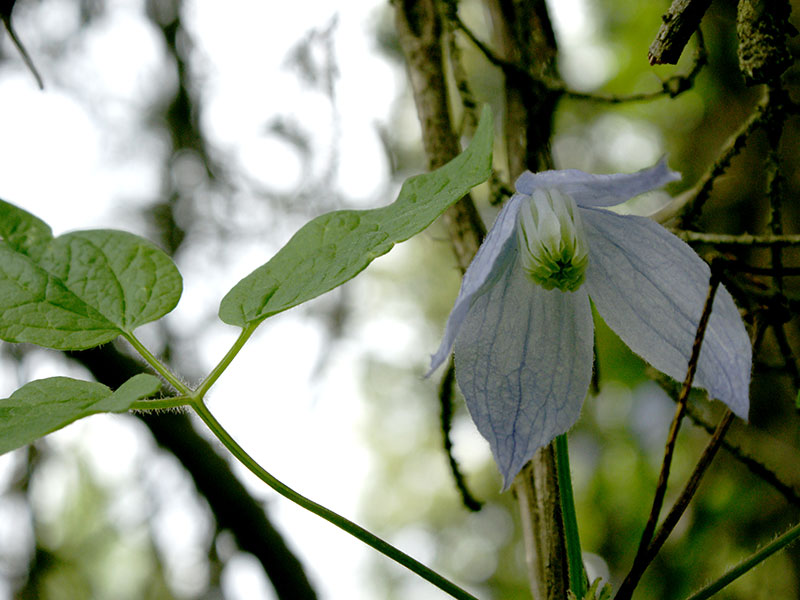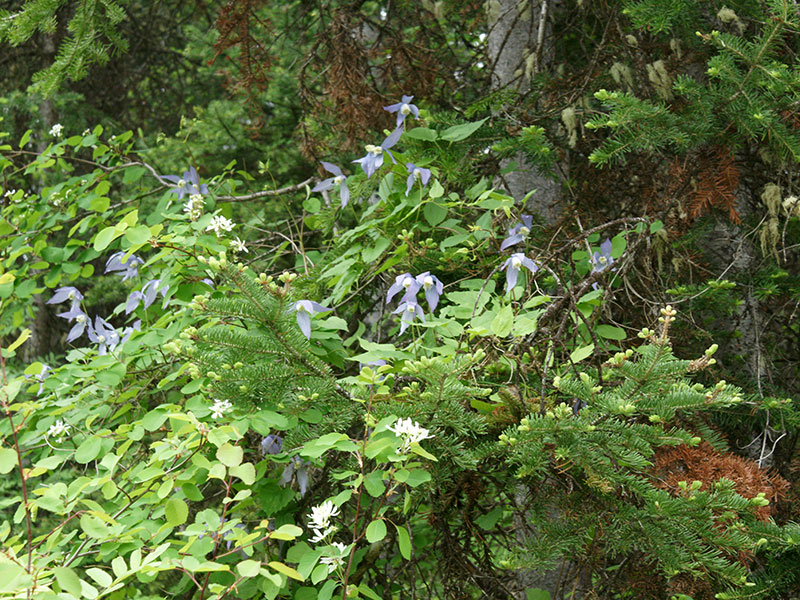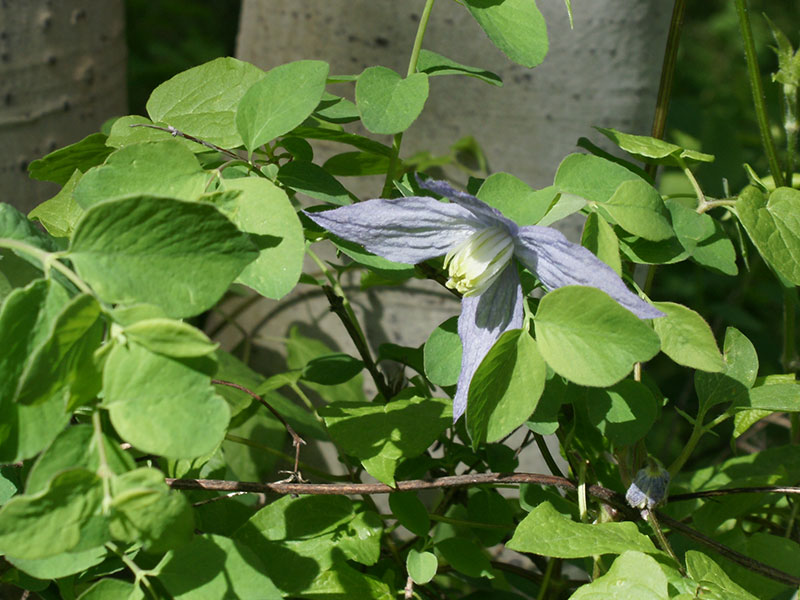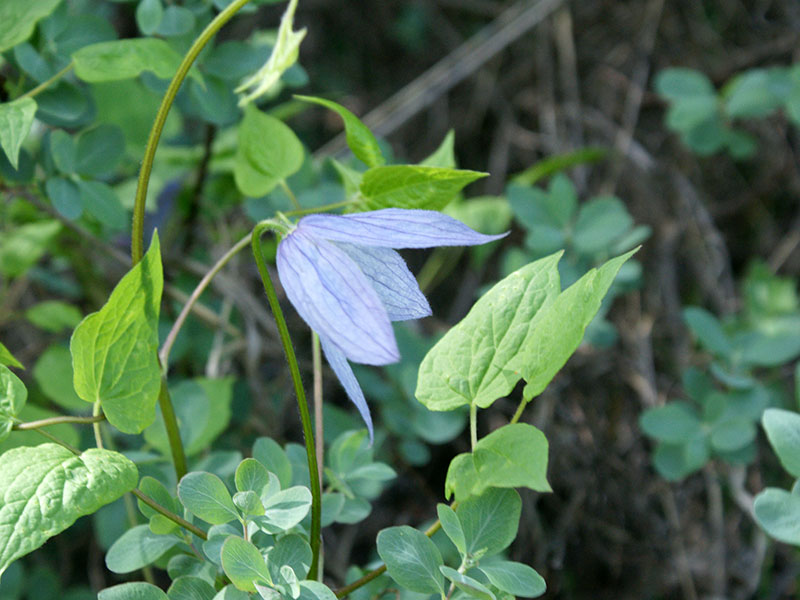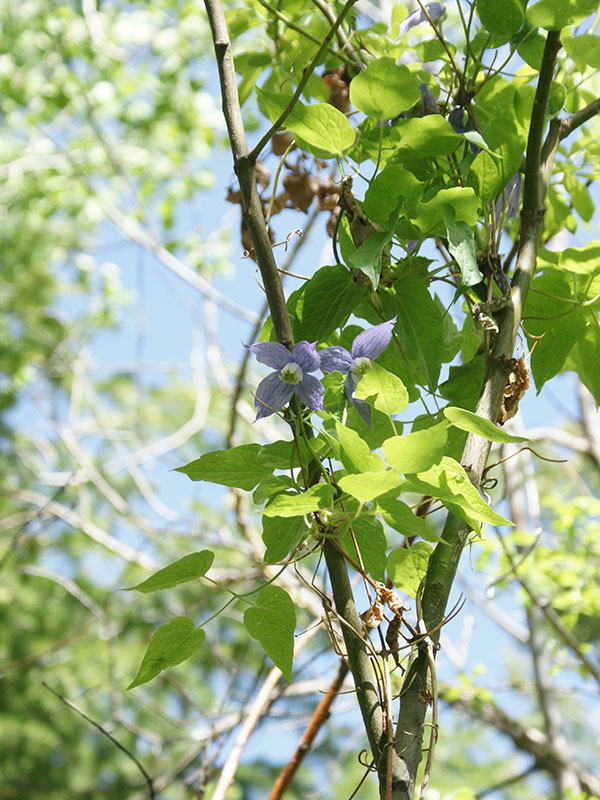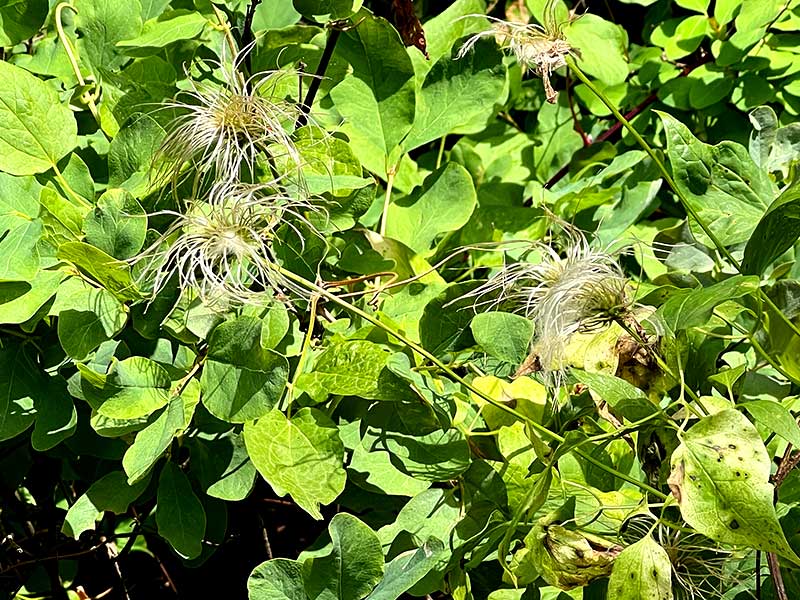Clematis occidentalis / purple clematis
- grows as a vine with hairy stems – on ground, over logs or up trees
- leaves are trifoliate
- flowers have 4 “petals” and hang down (nodding)
- thick central core of stamens and pistils
Also known as: western blue virginsbower, purple virginsbower, western clematis, mountain clematis, rock clematis
See also: Clematis ligusticifolia / western white clematis
Synonyms: Atragene columbiana, C. columbiana, C. grosseserrata, C. pseudoalpina, C. verticillaris
Clematis occidentalis is one of a very few vines native to Idaho. Taxonomically, I think it is a bit of a mess. It turns out to be one of only two species in a subgenus of Clematis. The other one is C. columbiana. The difference between them has to do with just how serrated the leaf margins are. In fact, as you can see above, the two names are sometimes considered synonyms. For now, I will stand by the ID I’ve given and not lose any sleep over it.
In any case, purple clematis shows its violet to purple flowers beginning in late May through at least the end of June in the Valley. The flowers are large-ish but not all that obvious until you’ve seen a few, then they are everywhere. For example, I went down the north end of the Aspen trail because Rebecca Woods and Susan Marsh in Targhee Trails specifically mention the clematis there in late spring. Since then, I have seen it numerous times on every hike I’ve taken on either side of the Valley.
The plant itself grows in the woods, and twines along the ground, over logs, into shrubs and up trees but I have not yet seen a really large plant. If you see a vine but no flowers, look at the leaves. Purple clematis has opposite, trifoliate leaves with long petioles. The leaves are between oval and lance-shaped, hence ovate-lanceolate. The descriptions of their shapes aren’t all that helpful, e.g. “pointed, entire or blunt- to sharply toothed.” The leaflets are a couple inches long. The stems are thin and rather hairy.
The flowers are, of course, the striking thing. Each has four “petals”, actually sepals… for some reason there are no petals on clematis of any sort. They appear singly and they hang down, i.e. they are nodding. The sepals are showy but often not all that bright; the veins are a much darker purple. There is a central cylinder of numerous stamens surrounding the even more numerous pistils.
After fertilization, the fruit is a small, inconspicuous thing (achene) with long, feathery silver-white plumes in fluffy clusters. Beginning in late July or early August, the infructescences are similar to those of Clematis hirsutissima… like troll dolls.
| Color | |
|---|---|
| Family | |
| Blossom size | |
| Inflorescence size | |
| Inflorescence type | |
| When? | |
| Where? |
